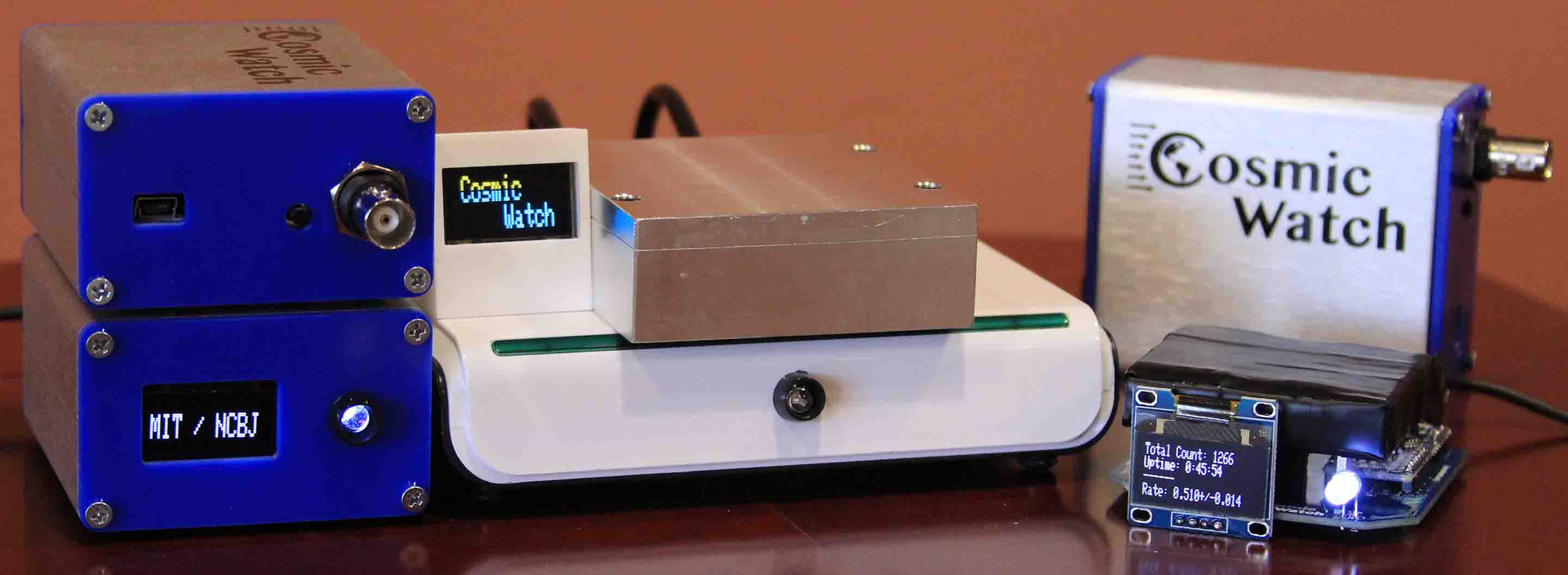CosmicWatch is an inexpensive “home-built” cosmic ray detector designed by physicists at the Laboratory for Nuclear Science at MIT. You can read more about it here: http://cosmicwatch.lns.mit.edu/about
The claim is that a college student can build one of these as a project for about $100 in about 4 hours1. I’m skeptical, but it’s an interesting idea, so I’m going to put it to the test and build one myself. I’m no longer a college student, but since I teach them, I want to see if this would be a viable project for our students, or even for local high school students.
I’ve been interested in cosmic rays for some time. As an undergraduate I spent a summer working for the University of Utah helping to construct a large cosmic ray detector called the Fly’s Eye2 out in the desert near Dugway, UT. As a graduate student at Yale I performed a simple coincidence experiment to detect cosmic rays, up in the attic of the physics building. As an Assistant Professor at Vassar College my Modern Physics Laboratory course included an experiment to measure the lifetime of muons from cosmic rays3. (I didn’t design it, but I did add some computer automation to the data acquisition.)
More recently, I collaborated with a group from the Education office at Fermi National Accelerator Laboratory (Fermilab) to create an “e-Lab” for high school students using data from the LIGO experiment4. That’s not about cosmic rays, but that e-Lab was modeled on a cosmic ray e-Lab5 they created for their QuarkNet6 project. By 2007 or so they had made several important advances in developing cosmic ray detectors that could be used by high school students. They created a PCI card for data acquisition which could be put in just about any school PC, and they had found a way to isolate the high voltages normally needed to drive a Photomultiplier Tube (PMT). The whole cost for a school to get started and join the detector network was, roughly, only around $2000. So now, a bit over ten years later, here is a comparable detector for (they claim) only $100. I have to check this out.
Instead of one long story, this will be a series of brief postings as the projects progresses. The post you just read introduced the idea, so it corresponds to the first part of the CosmicWatch “How to build it?” page. The next thing to look at is Purchasing Components.
References
- “CosmicWatch – How to Build it” http://cosmicwatch.lns.mit.edu/detector#steps ↩
- “A ‘New’ Experiment (1981)”, by the Telescope Array Project, http://www.telescopearray.org/index.php/history/the-fly-s-eye-1981-1993 ↩
- “Measuring the Lifetime of the Cosmic Ray Muon”, Vassar College Modern Physics Laboratory, v. 1.03 of 29 January 2003. ↩
- “LIGO e-Lab”, https://www.i2u2.org/elab/ligo/home/project.jsp ↩
- “Cosmic Ray eLab”, by the I2U2 collaboration, https://www.i2u2.org/elab/cosmic/home/project.jsp ↩
- QuarkNet, https://quarknet.org/ ↩
